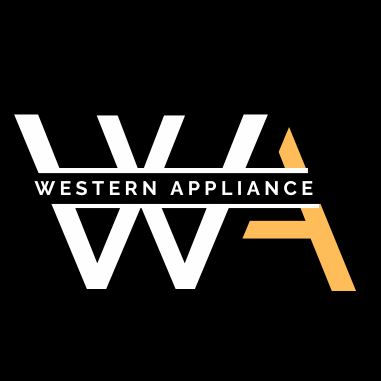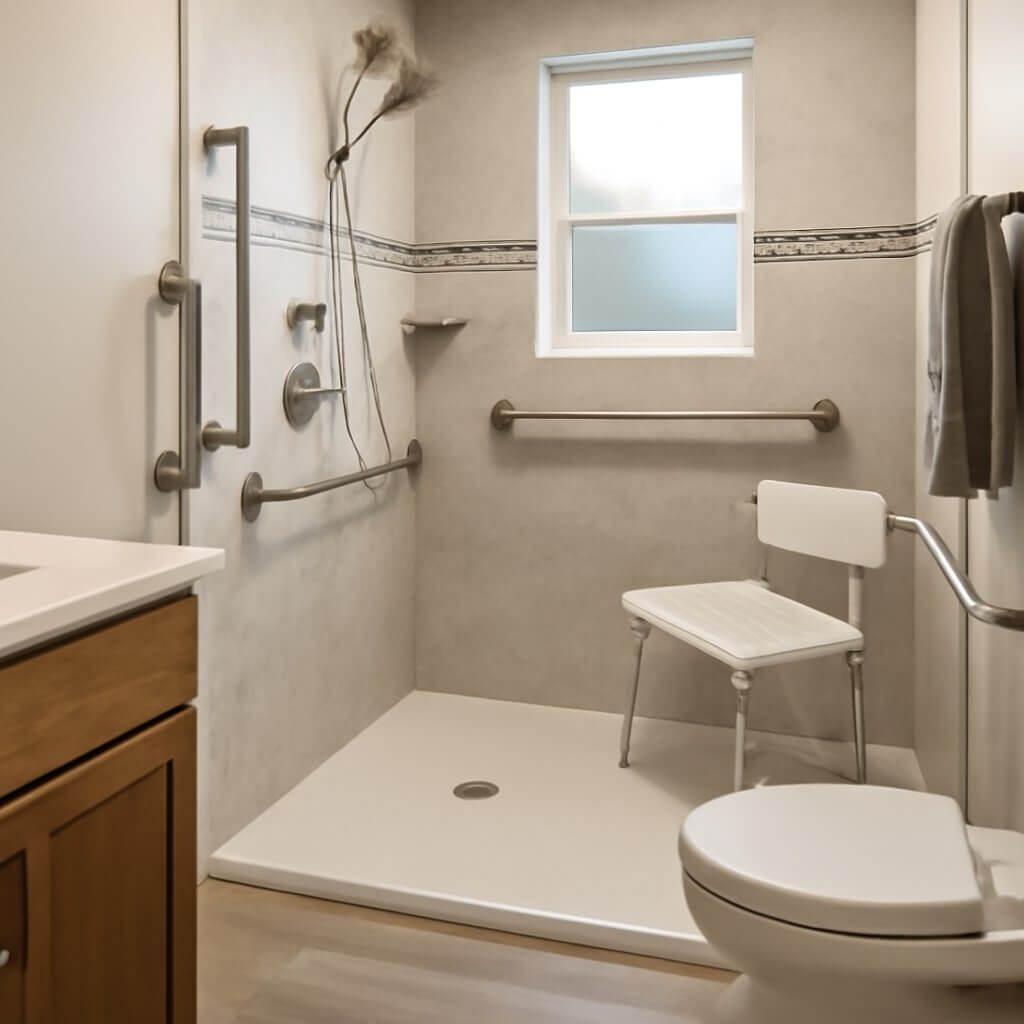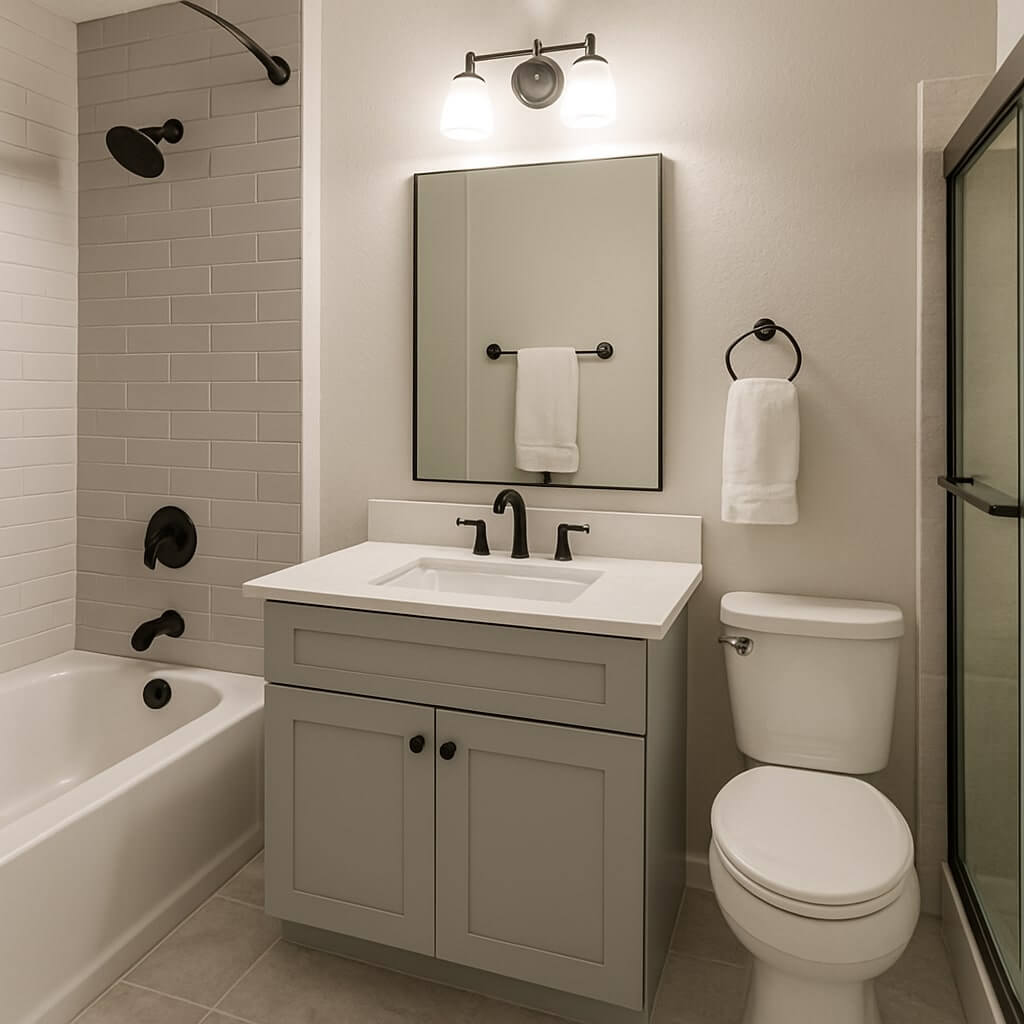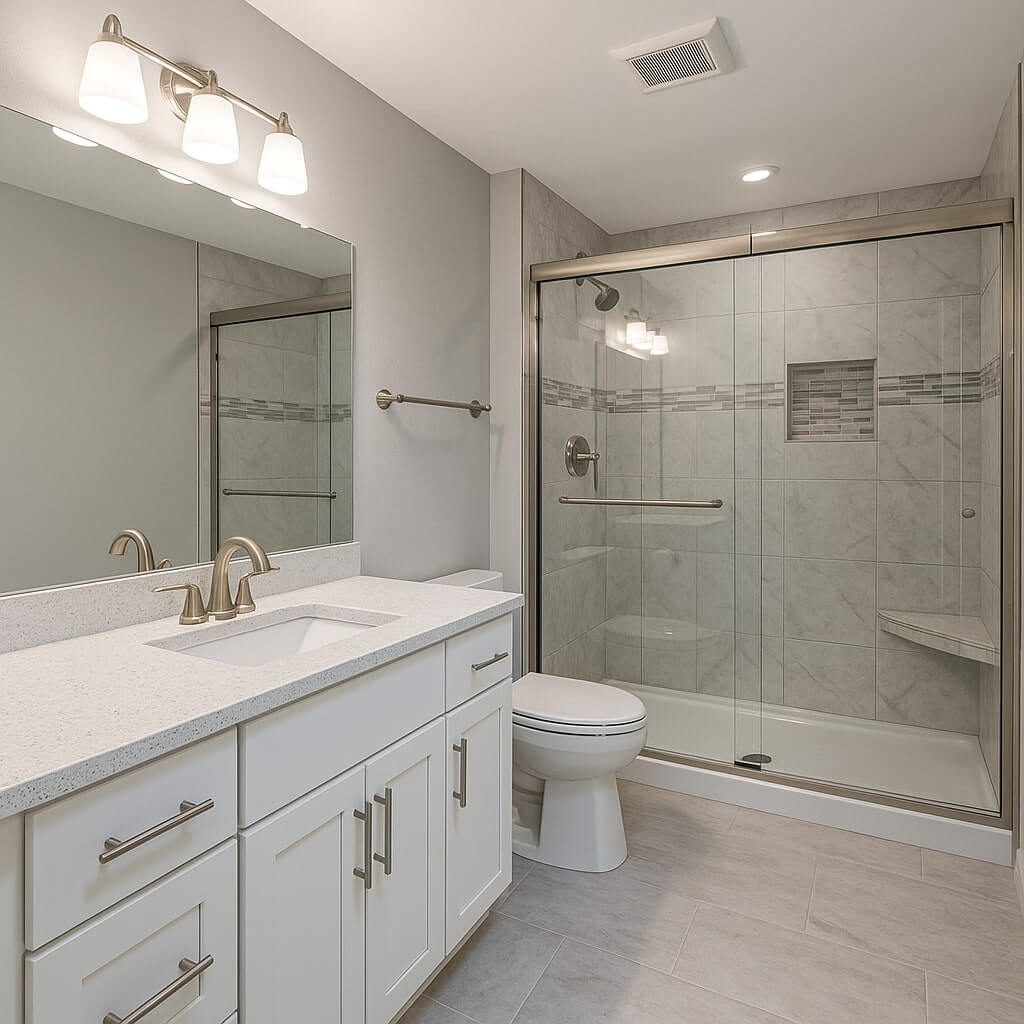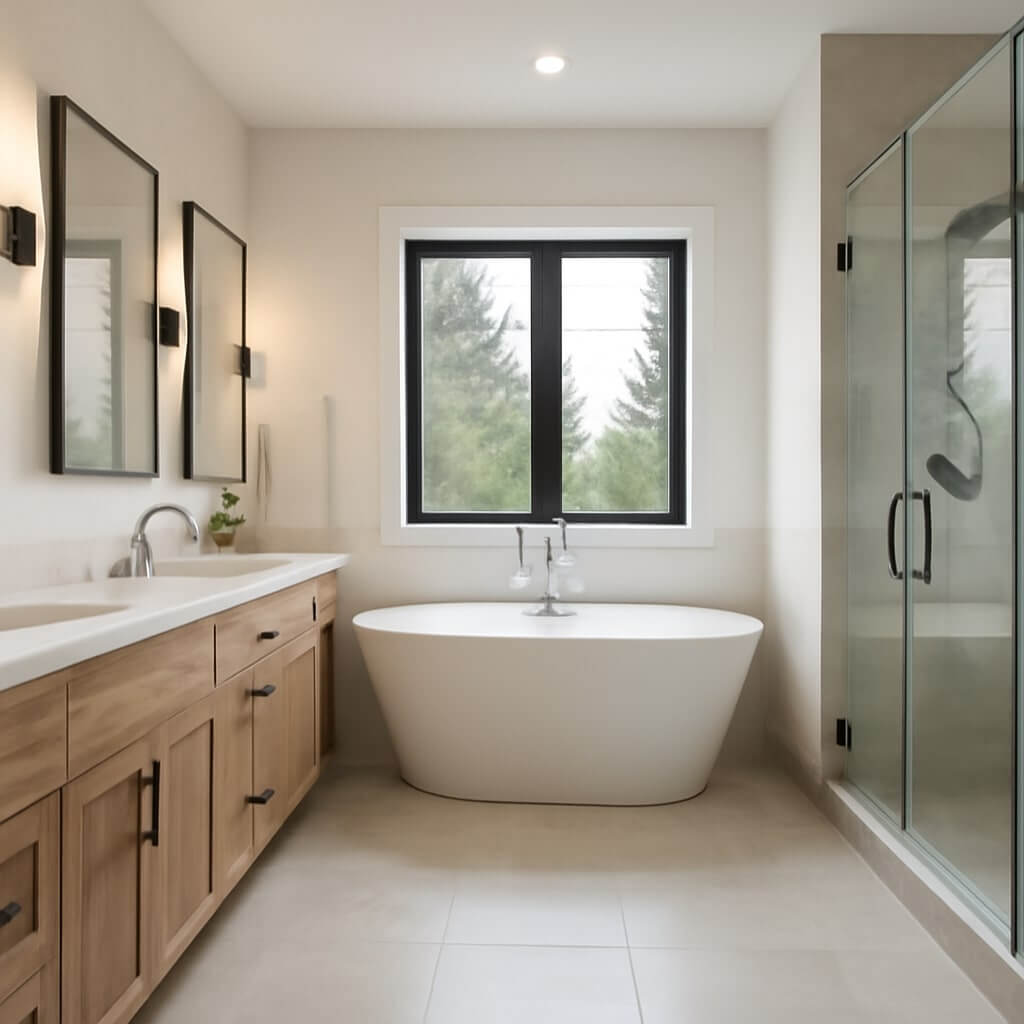When it comes to bathroom remodeling, Medicare’s coverage can be quite specific. It generally focuses on modifications that enhance safety and mobility for those with medical needs. Not every renovation qualifies, so understanding the criteria for coverage is vital. You’ll need to know what features might be eligible and how to demonstrate medical necessity. Let’s explore how you can navigate these requirements and optimize your benefits.
Key Takeaways
- Medicare may cover home modifications that enhance safety, such as grab bars and shower benches, under specific conditions.
- Coverage requires medical necessity, supported by healthcare provider documentation and justifications for safety enhancements.
- Durable Medical Equipment (DME) like raised toilet seats may be included if they meet Medicare’s eligibility criteria.
- Not all bathroom modifications qualify; cost-effectiveness and detailed records are necessary for approval.
- Consultations with healthcare professionals can help identify necessary modifications and optimize potential Medicare benefits.
Understanding Medicare Coverage Basics
While maneuvering through the complexities of Medicare, it’s essential to understand its coverage basics to make informed decisions about your health care.
Medicare is divided into several parts, each offering different benefits. Part A covers hospital stays, while Part B addresses outpatient care, preventive services, and some home health care.
Part C, or Medicare Advantage, combines both Part A and Part B benefits, often with additional services. Finally, Part D provides prescription drug coverage.
A thorough coverage overview helps you identify which services are included and guarantees you maximize your benefits while navigating your health care needs effectively.
What Home Modifications Are Typically Covered
When considering home modifications under Medicare, it’s crucial to understand which accessibility features are typically included.
Common modifications may range from grab bars to walk-in tubs, aimed at enhancing safety and mobility.
Knowing these options can help you make informed decisions about your bathroom remodeling project.
Accessibility Features Included
Medicare recognizes the importance of home modifications for individuals with disabilities, so it often covers specific accessibility features that enhance safety and mobility.
For instance, grab bars installed in the bathroom can greatly reduce the risk of falls, providing sturdy support when you need it most. Additionally, shower benches allow for safer bathing experiences, offering a stable place to sit while washing.
These modifications not only improve your independence but also contribute to your overall well-being.
It’s essential to consult with your healthcare provider to determine which features qualify for coverage under your Medicare plan, ensuring you receive the necessary support.
Types of Modifications
Numerous home modifications can enhance safety and accessibility for individuals with disabilities, and Medicare may cover several of these changes.
Here are some common types of modifications you might consider:
- Shower modifications to create a barrier-free entry.
- Grab bar installation to provide stability in wet areas.
- Non-slip flooring to reduce the risk of falls.
- Raised toilet seats for easier access.
The Role of Durable Medical Equipment
Durable medical equipment (DME) refers to items that help you manage daily activities and maintain your independence, such as raised toilet seats or grab bars.
To qualify for Medicare coverage, you’ll need to meet specific eligibility criteria that determine whether your equipment is deemed medically necessary.
However, it’s essential to understand the coverage limitations that may apply, as not all modifications will be included under DME benefits.
Definition of Durable Equipment
When considering bathroom remodeling for accessibility, understanding the role of durable medical equipment (DME) is essential.
Durable equipment refers to items that provide medical benefits and are designed for long-term use. Here are some definition examples of DME you might encounter:
- Grab bars for stability when entering or exiting the shower.
- Shower chairs that allow safe sitting while bathing.
- Toilet seat risers to ease sitting and standing.
- Raised sinks for wheelchair accessibility.
These items not only enhance safety but also promote independence in your daily activities.
Eligibility Criteria Overview
To qualify for Medicare coverage of bathroom remodeling that includes durable medical equipment, you need to meet specific eligibility criteria.
First, you must demonstrate a medical necessity for modifications, such as mobility challenges or disabilities.
Additionally, your healthcare provider must prescribe the changes, detailing how they improve your daily living.
You’ll also need to guarantee that the equipment aligns with Medicare’s eligibility requirements, which specify that it must be clinically appropriate and cost-effective.
Finally, understanding the coverage specifics is essential, as not all remodeling aspects may be covered.
Always consult with Medicare or your provider for tailored guidance.
Coverage Limitations Explained
Understanding the limitations of Medicare coverage for bathroom remodeling is essential, especially regarding durable medical equipment (DME).
While Medicare can help, it has coverage limitations that may impose financial constraints on your remodeling plans. Here are key points to reflect on:
- DME must be deemed medically necessary.
- Medicare covers specific items, like grab bars.
- Modifications for accessibility, like walk-in tubs, may not qualify.
- Costs for installation often aren’t covered.
Bathroom Safety Features That May Be Covered
While maneuvering through the complexities of Medicare coverage, it’s important to recognize that certain bathroom safety features may qualify for reimbursement.
Grab bars, for instance, are often covered as they help prevent falls and enhance stability. Non-slip surfaces are another feature that can improve safety, reducing the risk of slipping in wet areas.
When planning your bathroom remodel, consider incorporating these elements, as they not only promote safety but may also align with Medicare’s guidelines for coverage.
Always consult your healthcare provider to ascertain these modifications meet the necessary requirements for reimbursement eligibility under your specific Medicare plan.
Requirements for Coverage Approval
Medicare coverage for bathroom safety features hinges on specific requirements that must be met for approval.
To guarantee you qualify, focus on these key aspects:
- Medical Necessity: Your healthcare provider must indicate why modifications are essential.
- Coverage Documentation: Submit detailed records supporting your claim.
- Modification Justification: Clearly explain how each feature enhances safety and independent living.
- Cost-Effectiveness: Demonstrate that the proposed modifications are a financially viable alternative to ongoing care.
Meeting these criteria will increase your chances of receiving Medicare coverage for necessary bathroom safety enhancements.
Assessing Your Needs: When to Seek Modifications
When is it time to contemplate modifications for your bathroom? Start by conducting a safety assessment.
If you or a loved one experiences difficulties with mobility, balance, or daily tasks, it’s essential to evaluate your personal needs. Look for signs like frequent slips, difficulty entering or exiting the shower, or trouble reaching fixtures.
Consider whether your current bathroom layout accommodates assistive devices or modifications. If you find yourself struggling, it may be time to seek changes that enhance safety and accessibility.
Prioritizing these modifications can greatly improve comfort and independence in your daily routine.
Alternative Funding Options for Home Remodeling
Exploring alternative funding options for home remodeling can greatly ease the financial burden of necessary modifications.
Consider these strategies:
- Home Grants: Look for local or state programs that provide funds specifically for accessibility upgrades.
- Personal Loans: Consider low-interest loans tailored for home improvement projects.
- Crowdfunding: Leverage platforms to gather financial support from friends, family, and community members.
- Tax Credits: Research potential tax deductions available for home modifications that improve accessibility.
Working With Healthcare Professionals for Support
Securing funding for bathroom remodeling is just one step in enhancing accessibility in your home.
To guarantee your project meets your specific needs, engage in healthcare consultations with professionals experienced in home modifications. These experts can provide professional assessments to identify necessary changes and recommend appropriate solutions.
They’ll evaluate your current situation and suggest modifications that improve safety and mobility. By collaborating with healthcare professionals, you’ll gain insights into best practices, ensuring your remodeling efforts align with your health requirements.
Their expertise not only supports your project but can also help maximize potential Medicare benefits for necessary modifications.
Resources for Further Information on Medicare Coverage
To better understand Medicare coverage for bathroom remodeling, it’s essential to tap into reliable resources that provide thorough information.
Here are some key Medicare resources to explore:
- Medicare.gov – The official site for extensive coverage guidelines.
- State Health Insurance Assistance Programs (SHIP) – Local assistance for personalized guidance.
- Centers for Medicare & Medicaid Services (CMS) – In-depth policy documents and updates.
- AARP – Valuable articles and resources on Medicare-related topics.
Conclusion
In conclusion, while Medicare doesn’t cover full bathroom remodels, it does provide support for essential safety modifications deemed medically necessary. By understanding the specifics of coverage, including Durable Medical Equipment and necessary documentation, you can better navigate the process. Assess your needs carefully, consult with healthcare professionals, and explore alternative funding options if needed. Staying informed can help you make the most of your Medicare benefits while ensuring a safer living environment.
